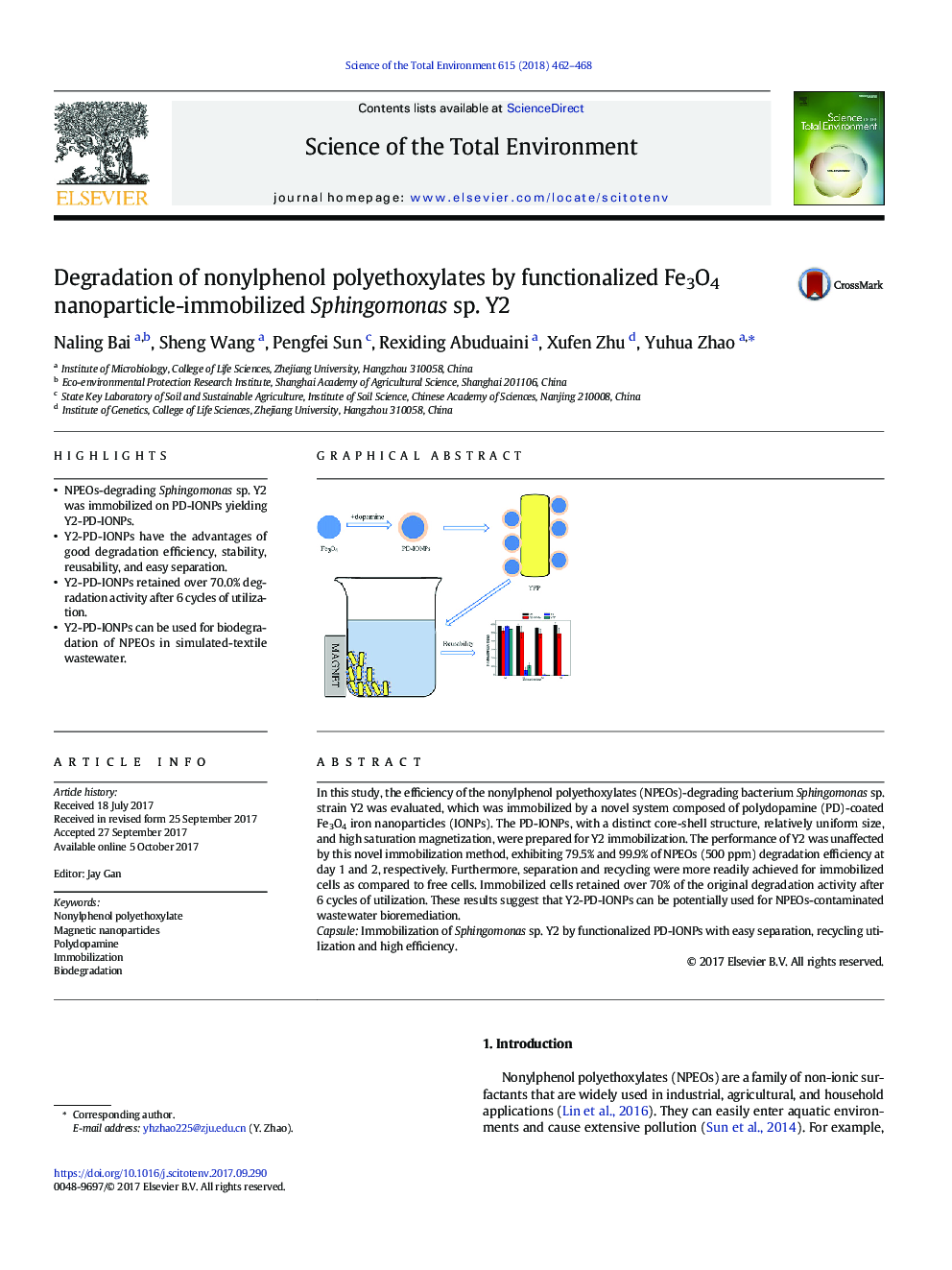| Article ID | Journal | Published Year | Pages | File Type |
|---|---|---|---|---|
| 5749801 | Science of The Total Environment | 2018 | 7 Pages |
â¢NPEOs-degrading Sphingomonas sp. Y2 was immobilized on PD-IONPs yielding Y2-PD-IONPs.â¢Y2-PD-IONPs have the advantages of good degradation efficiency, stability, reusability, and easy separation.â¢Y2-PD-IONPs retained over 70.0% degradation activity after 6 cycles of utilization.â¢Y2-PD-IONPs can be used for biodegradation of NPEOs in simulated-textile wastewater.
In this study, the efficiency of the nonylphenol polyethoxylates (NPEOs)-degrading bacterium Sphingomonas sp. strain Y2 was evaluated, which was immobilized by a novel system composed of polydopamine (PD)-coated Fe3O4 iron nanoparticles (IONPs). The PD-IONPs, with a distinct core-shell structure, relatively uniform size, and high saturation magnetization, were prepared for Y2 immobilization. The performance of Y2 was unaffected by this novel immobilization method, exhibiting 79.5% and 99.9% of NPEOs (500Â ppm) degradation efficiency at day 1 and 2, respectively. Furthermore, separation and recycling were more readily achieved for immobilized cells as compared to free cells. Immobilized cells retained over 70% of the original degradation activity after 6Â cycles of utilization. These results suggest that Y2-PD-IONPs can be potentially used for NPEOs-contaminated wastewater bioremediation.CapsuleImmobilization of Sphingomonas sp. Y2 by functionalized PD-IONPs with easy separation, recycling utilization and high efficiency.
Graphical abstractDownload high-res image (128KB)Download full-size image
